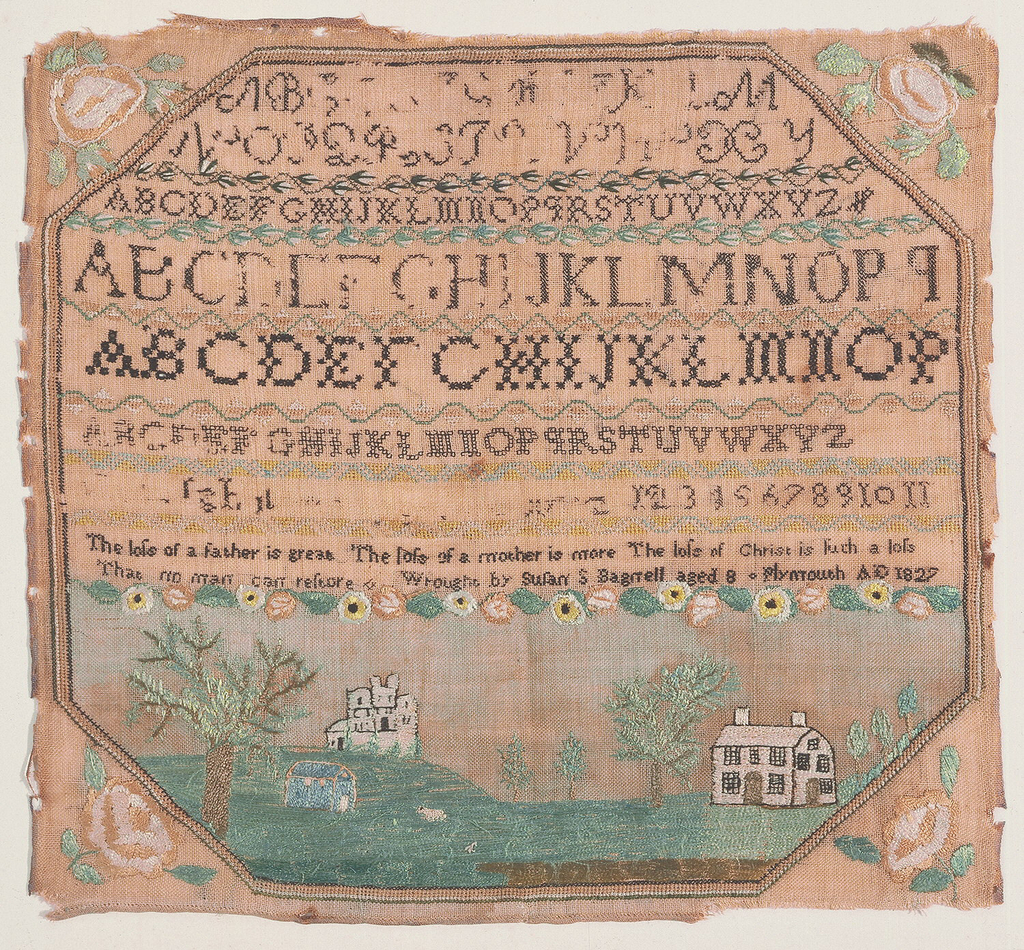Susan Sampson Bagnell’s sampler is part a group of Plymouth, Massachusetts, samplers dating from 1816 to 1845. The earliest examples had a rounded central field, which by the 1820s had evolved into the cross-stitched octagonal enclosure seen on Susan’s sampler. Although there were few Quakers living in Plymouth, the group’s bold Roman alphabets, and the ligatures seen on early examples, reflect a Quaker influence. Other motifs commonly found on Plymouth samplers include floral borders with roses at their corners, floral cross borders, and landscapes. As with Susan’s sampler, such landscapes often featured buildings and were frequently embellished with paint. Two closely related examples with three-bay houses similar to the one worked by Susan were made in 1831 by Betsey Ellis Hutchinson (Pilgrim Hall Museum, Plymouth) and in 1832 by Susan Stephens Lapham (Philadelphia Museum of Art).
It is not known whether the samplers were worked under the same instructress, but it is likely that they were made at a Plymouth girl’s school run by the sisters Sarah (1795–1878) and Deborah L. Turner (1797–1838). Sarah and Deborah were assisted by their Swedish-born sister-in-law, Marie de Verdier Turner (1789–1838), who is thought to have introduced needlework, painting, and music into the curriculum by 1813.
Susan Sampson Bagnell (1819–1888) was the granddaughter of Lieutenant Richard Bagnell, who served during the Lexington Alarm, the first battle of the Revolutionary War. She was born on October 7, 1819, less than three months after the July marriage of her parents, Richard Bagnell (b. 1802), a ship carpenter, and Lydia Sampson (b. about 1802). Susan had a brother, Richard William (b. 1822), and a sister, Lydia Ann (b. about 1838). In 1845, she married William Weston (1819–1884), a house carpenter, with whom she had at least three children, William L. (1848–1869), Herbert L. (b. about 1851), and Mary E. (b. about 1858). Susan, her husband, and their son William are buried in the cemetery on Burial Hill in Plymouth.
